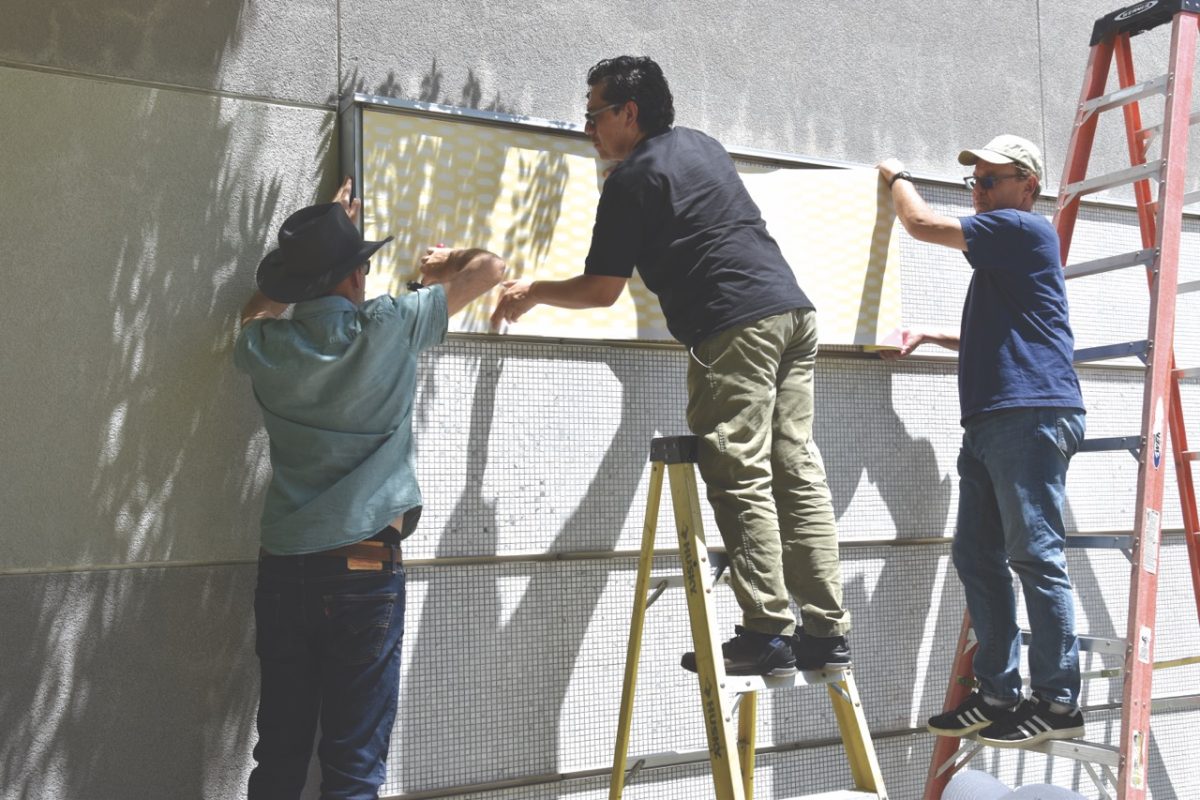A group of California community colleges were awarded nearly $18 million in federal grants for the development and expansion of career training programs, with an unprecedented $14.9 million grant awarded to Los Medanos College, the fiscal agent of the grant. The award was presented on September 24 to various schools.
Championed and created by Congressman George Miller, the grant was awarded due to a new program, “Design It-Build It-Ship It” (DBS), a workforce initiative program designed by the commu- nity colleges to provide expansion and development of af fordable career training programs that meet industry needs, such as transporta- tion, advanced manufacturing and health care. A long time champion of public schools and community colleges, one of Miller’s missions in Congress has been to improve the affordability and accessibility of college to students.
“The TAA funding is designed to help the students improve their ability to help adults enter in a new career more efficiently,” said Randy Tillery, Dean of Economic and Workforce Development for the
CCCCD depar tment. “It targets unemployed or under-employed adults, but training programs that are developed with this funding will be available to all students. Essentially, it will help us try to offer training programs that are more accessible for unemployed adults who need to get training as quickly as possible to support their families.”
The goal of this grant is to create a regional workforce system which will include development of career paths in individual colleges and across the consortium, which in addition to Los Medanos College also includes Berkeley City College, Chabot College, College of Alameda, Contra Costa College, Diablo Valley College, Laney College, Merritt College, Ohlone College, Solano Community College, California State University East Bay and University California Berkeley. The consortium plans to do this by creating stronger ties between the colleges and the One-Stop Career Center system, and the development of more career transfer pathways from community colleges to the University of California and California State University systems. This grant prepare for their future whether they choose to enter the workforce directly after LMC or after transferring to a four-year college.
According to Kiran Kamath, LMC Interim Senior Dean of Instruction and Accreditation Liaison Officer, the grant will enable LMC to implement the plans developed in the Vision 20/20 strategic planning initiative, and enable LMC to develop and implement a sustainable system and structure for workforce development at the college.
“It will enable us to connect essential student services to prepare students in any program at the college for a future career,” said Kiran. “It will help us serve our students better by providing career-related orientations, career exploration, career guidance and counseling, career education, [and other] ser vices to prepare students to apply for jobs and help place students in the jobs they have been studying for at the college.”
Former LMC student and current UC Davis student Tyson Rochelle considers thisan“amazingopportunity.”
“Community colleges are already supposed to be friend- lier financially, so students can transfer on to universities or advance their careers in dif ferent programs, but it’s gotten so hard for people just to get into schools that even community college students are capped off as far as enrollment goes,” said Tyson. “Hopefully this new source of funding will help revive students’ hopes of having enough resources to be able to go on to get better jobs.”
While the consortium wrote and submitted their plans, Randy Tillery organized and put the final application, where it was passed and signed into law by Congressman Miller in 2010, known as the Trade Adjustment Assistance Community College and Career Training grant program (TAACCT) as par t of the Student Aid and Fiscal Responsibility Act. This led to increased investment in community colleges and career paths for many middle class Americans, as well as an added $2 billion dollars to TAACCT, which is designed to assist students by providing employment opportunities and promoting skill development that can be completed in two years or less. In a four-year period, this grant will allow for 12 months worth of pro- gram development, planning and creating education and training programs for over 2,000 students in the East Bay.
“We spent about 6 months planning with the other colleges and our regional par tners,” said Tillery, “which include the workforce boards and economic development agencies and employers to align the grant with the needs of our system and submit an application.
Administered and imple- mented by the U.S. Depar t- ment of Labor in coordination with the U.S. Department of Education, these grants were a direct result of President ObamaAdministration’splanto strengthen American businesses by strengthening the American workforce by enhancing ties with community colleges, employers, and local par tners while providing students with tools and resources necessary for careers in high-skill and high-pay occupations.
“The grant allows us some time for planning and program development so I believe we will see programs directly funded by this grant coming online in the coming year. We may begin to see changes in some existing programs and accessibility to our programs by people referred through the regional workforce system before that,” added Tillery.
Several other California community colleges were also part of consortiums with other community colleges in other states that were granted almost $40 million for the purpose of developing par tnerships with local employers searching to hire from the educated work- force. In total, 297 schools across the countr y will benefit from these grants as individual applicants or members of a consortium. Community Col- lege and University Consor tia will receive 27 grants totaling $359.2 million, while individual institutions were the recipient of another 27 awards totaling $78.2 million.
Each grantee is required to collect student outcome data each year, and also conduct evaluations at the end of the grant period.
Further information can be found at the California Community Colleges Chancellor’s Office Workforce and Econom- ic Development Division at doingwhatmatters.cccco.edu.
Judy Dudziak, a parent of community college students, is grateful for any oppor tunities that can be helpful for students.
“Workforce training programs, transfer pathways, partnerships; anything that prepares a student for an actual career”.






